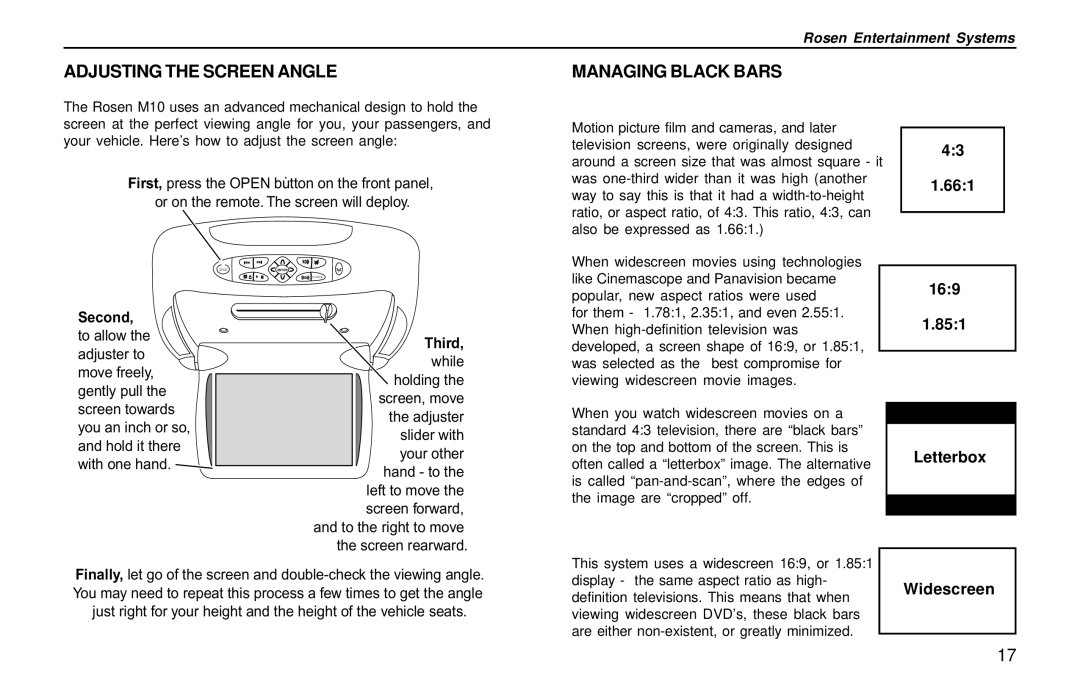
Rosen Entertainment Systems
ADJUSTING THE SCREEN ANGLE
MANAGING BLACK BARS
The Rosen M10 uses an advanced mechanical design to hold the screen at the perfect viewing angle for you, your passengers, and your vehicle. Here’s how to adjust the screen angle:
.
First, press the OPEN button on the front panel, or on the remote. The screen will deploy.
OPEN | ENTER |
SOURCE
Motion picture film and cameras, and later television screens, were originally designed around a screen size that was almost square - it was
When widescreen movies using technologies like Cinemascope and Panavision became popular, new aspect ratios were used
4:3
1.66:1
16:9
Second,
to allow the adjuster to move freely,
gently pull the screen towards you an inch or so, and hold it there with one hand. ![]()
Third,
while holding the screen, move the adjuster slider with your other hand - to the left to move the screen forward,
and to the right to move the screen rearward.
for them - 1.78:1, 2.35:1, and even 2.55:1. When
When you watch widescreen movies on a standard 4:3 television, there are “black bars” on the top and bottom of the screen. This is often called a “letterbox” image. The alternative is called
1.85:1
Letterbox
Finally, let go of the screen and
This system uses a widescreen 16:9, or 1.85:1 display - the same aspect ratio as high- definition televisions. This means that when viewing widescreen DVD’s, these black bars are either
Widescreen
17
